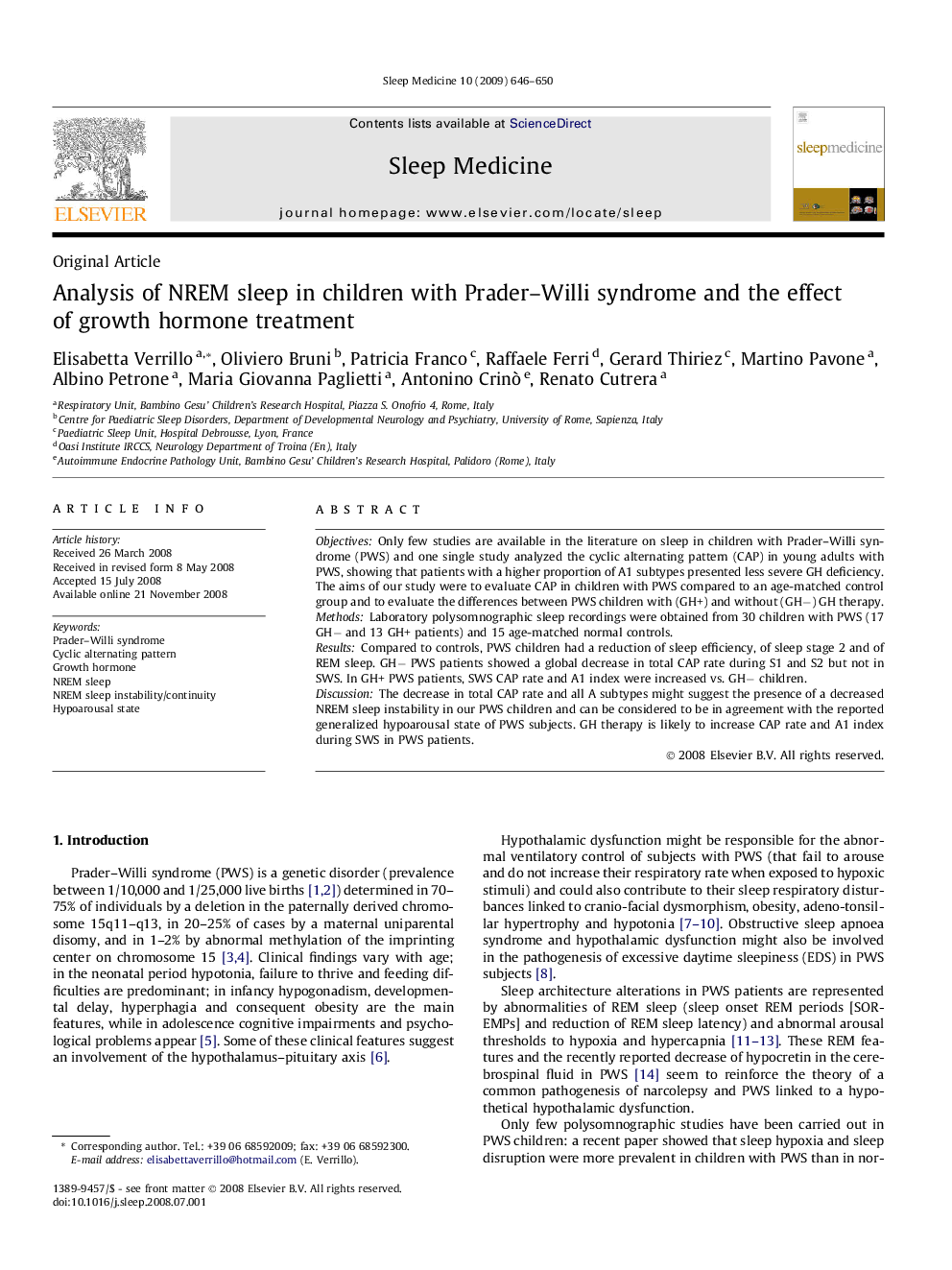| Article ID | Journal | Published Year | Pages | File Type |
|---|---|---|---|---|
| 3177591 | Sleep Medicine | 2009 | 5 Pages |
ObjectivesOnly few studies are available in the literature on sleep in children with Prader–Willi syndrome (PWS) and one single study analyzed the cyclic alternating pattern (CAP) in young adults with PWS, showing that patients with a higher proportion of A1 subtypes presented less severe GH deficiency. The aims of our study were to evaluate CAP in children with PWS compared to an age-matched control group and to evaluate the differences between PWS children with (GH+) and without (GH−) GH therapy.MethodsLaboratory polysomnographic sleep recordings were obtained from 30 children with PWS (17 GH− and 13 GH+ patients) and 15 age-matched normal controls.ResultsCompared to controls, PWS children had a reduction of sleep efficiency, of sleep stage 2 and of REM sleep. GH− PWS patients showed a global decrease in total CAP rate during S1 and S2 but not in SWS. In GH+ PWS patients, SWS CAP rate and A1 index were increased vs. GH− children.DiscussionThe decrease in total CAP rate and all A subtypes might suggest the presence of a decreased NREM sleep instability in our PWS children and can be considered to be in agreement with the reported generalized hypoarousal state of PWS subjects. GH therapy is likely to increase CAP rate and A1 index during SWS in PWS patients.
